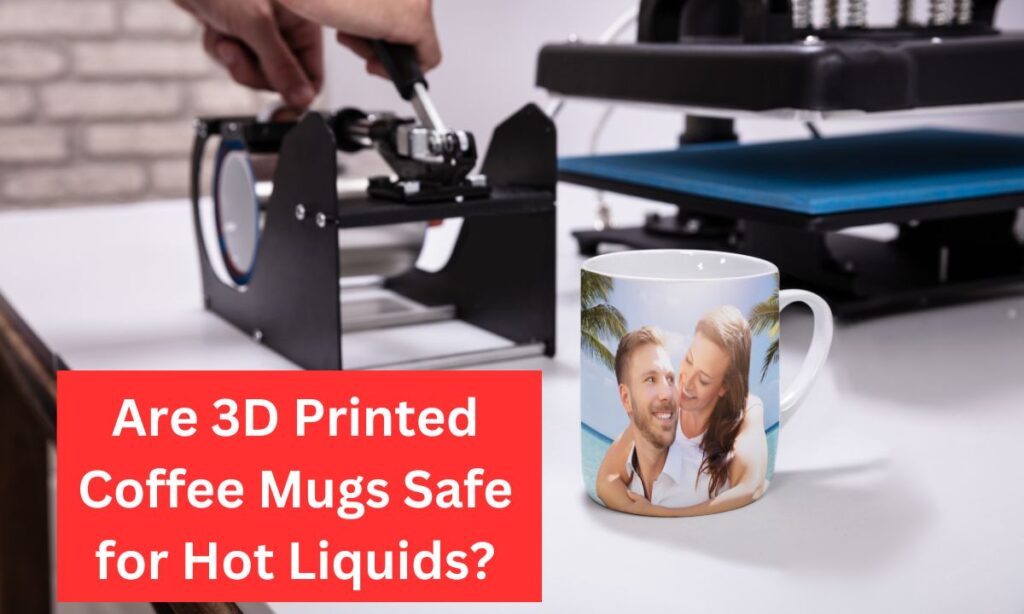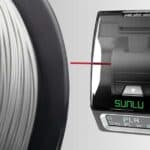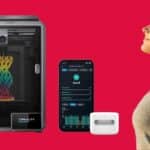
Can you safely drink hot coffee from a 3D printed mug? Yes, if you use food-safe filament, post-process thoroughly, and follow ca
Ever thought about sipping your morning coffee from a 3D printed mug you designed yourself? It’s a tempting idea for anyone who’s into 3D printing or enjoys customizing their everyday items. But before you pour your steaming hot coffee into that cool-looking mug, there’s one crucial question you need to ask:Are 3D Printed Coffee Mugs Safe for Hot Liquids?? Let’s explore the materials, risks, and best practices to help you make an informed choice before trusting a 3D printed mug with your favorite brew.
Affiliate Disclosure
We participate in Amazon affiliate programs, earning fees from qualifying purchases via links at no extra cost to you. It’s how we keep this blog rolling and my 3D printers buzzing with fresh filament for reviews like this one!
For insights on the safety of 3D printed drinkware, check out Can You Drink Out of 3D Printed Cups?.
How 3D Printing Works for Coffee Mugs
To understand if a 3D printed coffee mug can handle hot liquids, let’s first break down how 3D printing works. 3D printers build objects layer by layer, typically using materials like PLA (Polylactic Acid), ABS (Acrylonitrile Butadiene Styrene), or resin. These layers bond together to form a solid object, but the process isn’t perfect. Tiny gaps can remain between layers, and not all materials are designed to handle heat or even be food-safe.
Designing and printing a coffee mug may sound simple—you just need the right shape and a functional handle, right? But when it comes to using that mug daily, especially with hot beverages, there’s more to consider. Not all filaments can handle high temperatures or prolonged exposure to liquids, and that’s where safety concerns arise.
To choose the right materials for safe decor, explore How to Choose the Best 3D Printing Filament for Home Decor.
Material Matters – Not All Filaments Are Food-Safe
The material you use for 3D printing plays a huge role in determining whether your mug is safe for hot liquids. The most common filament used in 3D printing is PLA, which is biodegradable and easy to work with. However, PLA has a low melting point, which means it’s not the best choice for something like a coffee mug. When exposed to heat, PLA can soften and warp, making it less durable for holding hot liquids. Here’s a breakdown of some common filaments and their safety concerns:
- PLA: While easy to print with, PLA has poor heat resistance. It can start to deform at around 60°C (140°F), which makes it risky for hot coffee or tea. It’s also not inherently food-safe, although there are some food-safe PLA variants available.
- ABS: More heat-resistant than PLA, ABS can handle higher temperatures but comes with its own issues. ABS is not food-safe and can release harmful chemicals when in contact with hot liquids.
- PETG: A better option for food-safe prints, PETG is more heat-resistant than PLA and ABS, and it’s often used for food containers. However, it still requires careful post-processing to ensure the print is smooth and free of gaps.
If you’re planning to print a coffee mug, PETG or other FDA-approved food-safe filaments are your best bet. These materials offer a balance between heat resistance and safety, but remember: the material alone isn’t enough to guarantee the mug will be safe.
Temperature Resistance – Will Your Mug Handle Hot Coffee?
Coffee is typically served at temperatures between 60°C to 85°C (140°F to 185°F), which can challenge the heat resistance of certain 3D printing materials. As mentioned earlier, PLA has a low melting point, which means it could start deforming as soon as you pour in your hot coffee. On the other hand, ABS, while more heat-resistant, isn’t safe for food contact. PETG offers better heat resistance, withstanding temperatures up to 70°C to 80°C (158°F to 176°F). But even then, you should be cautious. Some users report that PETG softens slightly when exposed to hot liquids for a long time, leading to deformations or leaks.
If you’re determined to use a 3D printed mug for your hot coffee, make sure the material can handle the heat. Otherwise, your beautiful custom mug could end up warping—or worse, leaking!
Why Surface Finish Matters – The Micro-Gaps Issue
Even if you choose a food-safe, heat-resistant material, the 3D printing process itself creates a unique problem: micro-gaps. These tiny gaps form between the layers as your printer builds the mug, which is normal for most 3D printed objects. The issue arises when bacteria or mold find their way into these gaps, making your mug unsanitary over time. Hot liquids exacerbate this problem. The heat can encourage bacterial growth in those little crevices, making it difficult to clean the mug thoroughly.
While post-processing can help, it’s not a perfect solution. Post-processing techniques like sanding, smoothing, or applying a food-safe coating can help minimize these gaps, creating a smoother surface and reducing the risk of bacteria buildup. However, you need to be diligent. Even the slightest imperfection can be enough to harbor germs if not addressed properly.
Best Practices for Using 3D Printed Coffee Mugs Safely

If you’re still excited about the idea of using a 3D printed mug for your coffee, there are several things you can do to make sure it’s as safe as possible:
- Use Food-Safe Filaments: Opt for PETG or other FDA-approved food-safe materials. These filaments are more resistant to heat and safer for food contact than PLA or ABS.
- Post-Process Your Mug: Sand down the mug to remove rough edges and imperfections. Apply a food-safe sealant or epoxy coating to create a smooth, non-porous surface.
- Avoid the Dishwasher: Hand wash your 3D printed mugs. The heat and water pressure in a dishwasher can wear down the layers, causing gaps to widen or the material to degrade over time.
- Don’t Microwave It: 3D printed mugs are generally not microwave-safe. The material can soften, and any gaps in the print may trap water, which can lead to breakage.
- Keep an Eye on Wear and Tear: Over time, the layers of the print might start to separate, especially if exposed to heat frequently. Regularly check your mug for signs of wear, and consider reprinting or replacing it if it begins to degrade.
FDA Regulations and What to Look Out For
Not all 3D printing materials are FDA-approved for food contact, and that’s something you should pay attention to. If you’re buying filament specifically to make food-related items like coffee mugs, look for certification that it’s food-safe. PETG is a good option, but it still requires proper post-processing to make sure the print doesn’t pose health risks. If you’re buying a pre-made 3D printed mug, don’t hesitate to ask the seller about the material used and whether it’s food-safe. Certifications and transparency go a long way in ensuring that the product is safe for use with hot beverages.
Conclusion: Are 3D Printed Coffee Mugs Safe For Hot Liquids?
So, can you safely drink hot coffee from a 3D printed mug? The answer is: It depends. While 3D printed coffee mugs are a fun and creative idea, they come with some significant safety concerns, especially regarding the materials used and the printing process itself. If you’re willing to put in the effort—choosing the right filament, post-processing the mug thoroughly, and following proper care guidelines—then yes, you can enjoy a 3D printed mug for your hot beverages. However, if you’re looking for a quick and easy solution, traditional mugs might be the safer choice.
Ultimately, 3D printed coffee mugs can be a great way to express your creativity and personalize your drinkware, but only if you take the necessary steps to ensure safety.
Frequently Asked Questions (FAQs)
Can I drink cold beverages from a 3D printed mug?
Yes, cold beverages are generally safe in 3D printed mugs, especially if you use a food-safe filament like PETG. However, you should still ensure the mug is properly post-processed to avoid bacteria buildup in any gaps.
How can I tell if my 3D printed mug is food-safe?
To ensure food safety, use FDA-approved food-safe filaments and post-process the mug by sanding and applying a food-safe sealant or epoxy. Always check the product label or filament details for food safety certifications.
What kind of coating should I use to make my 3D printed mug more durable and safe?
You can apply a food-safe epoxy resin or polyurethane coating to seal the surface of your mug. This helps fill in any gaps between layers, making the mug smoother, more durable, and resistant to bacteria.
How often should I replace my 3D printed mug if I use it for hot liquids?
You should replace the mug if you notice any signs of wear, such as layer separation, warping, or cracks. If used frequently with hot liquids, it’s advisable to monitor for wear and tear every few months.
Are there other 3D printing materials besides PETG that are food-safe?
Yes, some manufacturers produce food-safe variants of PLA and other filaments. However, always verify that the filament is certified as food-safe, and take care to post-process the item properly to ensure it’s hygienic for use with food or drink.













